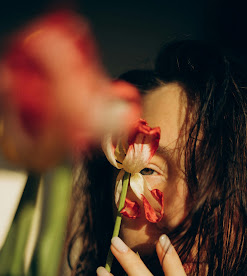Hey Neuroninas,
Bipolar Awareness Day was on March 30th, and I spent it in my DIY greenhouse, surrounded by fifty freshly planted seeds and glued to Facebook Marketplace kayak listings. I had time off for spring break and decided I would become a gardener who kayaks on weekends. Nothing says “mental stability” like spending $300 to paddle into the sunset and find myself.
But was this a genuine desire to embrace my adventurous spirit and reconnect with nature…or is spring mania quietly creeping in? That sudden burst of energy, the intense need for change, and the hyper-fixation on a new hobby that feels like the answer to everything. You’re riding high but also kinda suspicious of your own brain.
Why does mania show up in the spring? There’s actually science behind the seasonal spike. Research shows that changes in daylight exposure can disrupt circadian rhythms and throw your internal clock off balance. For people with bipolar disorder, these shifts can trigger manic or hypomanic episodes. A rapid increase in sunny days affects serotonin and melatonin levels, which can lead to heightened energy and less sleep. According to psychiatrist Chris Aiken, “An analysis of hospital admissions found that the rate of change in sunlight was responsible for 20% of the seasonal variance in admissions for mania.”
Once again, changes in sleep, routine, and sunlight impact our circadian systems, often enough to trigger a manic or hypomanic episode. The Journal of Psychiatric Practice reviewed nearly 200 studies on seasonal mania, 29 of which were original research papers. Out of those, 23 showed clear evidence that manic episodes peak in spring and summer based on hospital admission data. Around 15% of people with bipolar disorder appear to experience seasonal manic episodes. Unfortunately, the DSM-5 doesn’t currently allow doctors to diagnose mania with a “seasonal pattern” specifier (it only applies to depression), but that might need to change. Recognizing these patterns could help predict relapses and allow for early treatment adjustments to potentially reduce the chaos that seasonal mania can bring.
Don’t fact check me pls I’m just a girl 🥲
Works Cited
Aiken, Chris. “A New Tool for Springtime Mania.” Psychiatric Times, April 2017.
https://www.psychiatrictimes.com/view/new-tool-springtime-mania
Geoffroy, Pierre Alexis, et al. “Seasonality and Bipolar Disorder: A Systematic Review, from Admission Rates to Seasonality of Symptoms.” Journal of Affective Disorders, vol. 168, 2014, pp. 210–223.
https://pubmed.ncbi.nlm.nih.gov/23852105/
Sharma, Verinder, and Carr, Tara J. “Seasonal Pattern and Bipolar Disorder: A Review of the Literature.” Journal of Psychiatric Practice, vol. 19, no. 4, 2013, pp. 301–308.
https://doi.org/10.1097/01.pra.0000435114.24951.6b
American Psychiatric Association. Diagnostic and Statistical Manual of Mental Disorders (DSM-5®). 5th ed., American Psychiatric Publishing, 2013.






